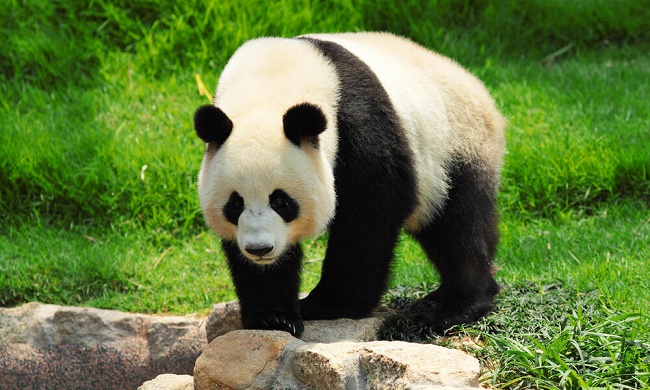Over the decades, China has used its pandas as a tool for diplomatic relations, gifting or loaning them to countries as a gesture of friendship.

This practice is largely known as panda diplomacy.
During a visit to the Dujiangyan base of China Conservation and Research Centre for the Giant Panda (CCRCGP), journalists participating in China’s media exchange programme witnessed China’s commitment to preserving its national treasure, pandas.
Located at Qing Cheng town, the Dujiangyan base is not just a sanctuary able to support 40 giant pandas, but also a research facility that plays a crucial role in China’s conservation efforts.
The base is composed of functional zones of disease prevention and research, rescue and quarantine, rehabilitation training, public education, administrative office and the natural landscape area.
To the Chinese, the panda represents peace and is a cultural treasure that reflects the delicate balance between nature and human civilisation.
With about 230 million RMB ($4,127,000) invested in conservation efforts, the Dujiangyan base has led the way in captive breeding, rewilding efforts and advanced research into panda behaviour and genetics.
According to Mr. Jiang Weiwei, Secretary of the Communist Party of China Dujiangyan Municipal Committee, the city boasts of 30 million annual average number of visitors and 40 billion yuan (over $5 billion) from tourism.
He said that Dujiangyan was consistently ranked among China’s top 100 counties in tourism comprehensive strength with giant panda bases being part of its world-class tourist destinations.
Wei Rongping, Deputy Director, China Conservation and Research Centre for the Giant Panda, spoke about the enormous responsibility that comes with preserving the creatures.
He said that the base was built to balance development and protection of the environment as well as the distinct species.
“Protecting them in our bases is one of the biggest challenges we face because they are used to living on high lands.
“We had to get information about how they used to live and then take care of them accordingly to give them the best chance at survival,” he explained.
According to Wei, Sichuan Province houses about 1,040 wild and 500 captive pandas with over 50 per cent in Dujiangyan base.
He said that while protecting pandas in the base, the locals were put into consideration.
Asides protecting pandas, the centre is also empowering locals, he added.
Wei said that over 120 jobs had been created in the Dujiangyan base, offering locals sources of livelihood.
“From gardeners and interpreters, to researchers, we continue to help the villagers to improve their incomes and lives.”
According to a tour guide, as early as five years, giant pandas can start reproducing and the average years of a wild panda is 20.
“At the moment, the oldest panda, Paiyun, is 34 years old,” she noted.
The Dujiangyan base is the first giant panda disease prevention and control institution in the world.
It is an open platform for scientific cooperation.
As the main platform for the international and domestic scientific cooperation and exchanges of CCRCGP, it is also the point of departure for giant pandas travelling abroad.
By Busayo Onijala, News Agency of Nigeria (NAN)
